The glory of Genoa – Italy’s secret gem
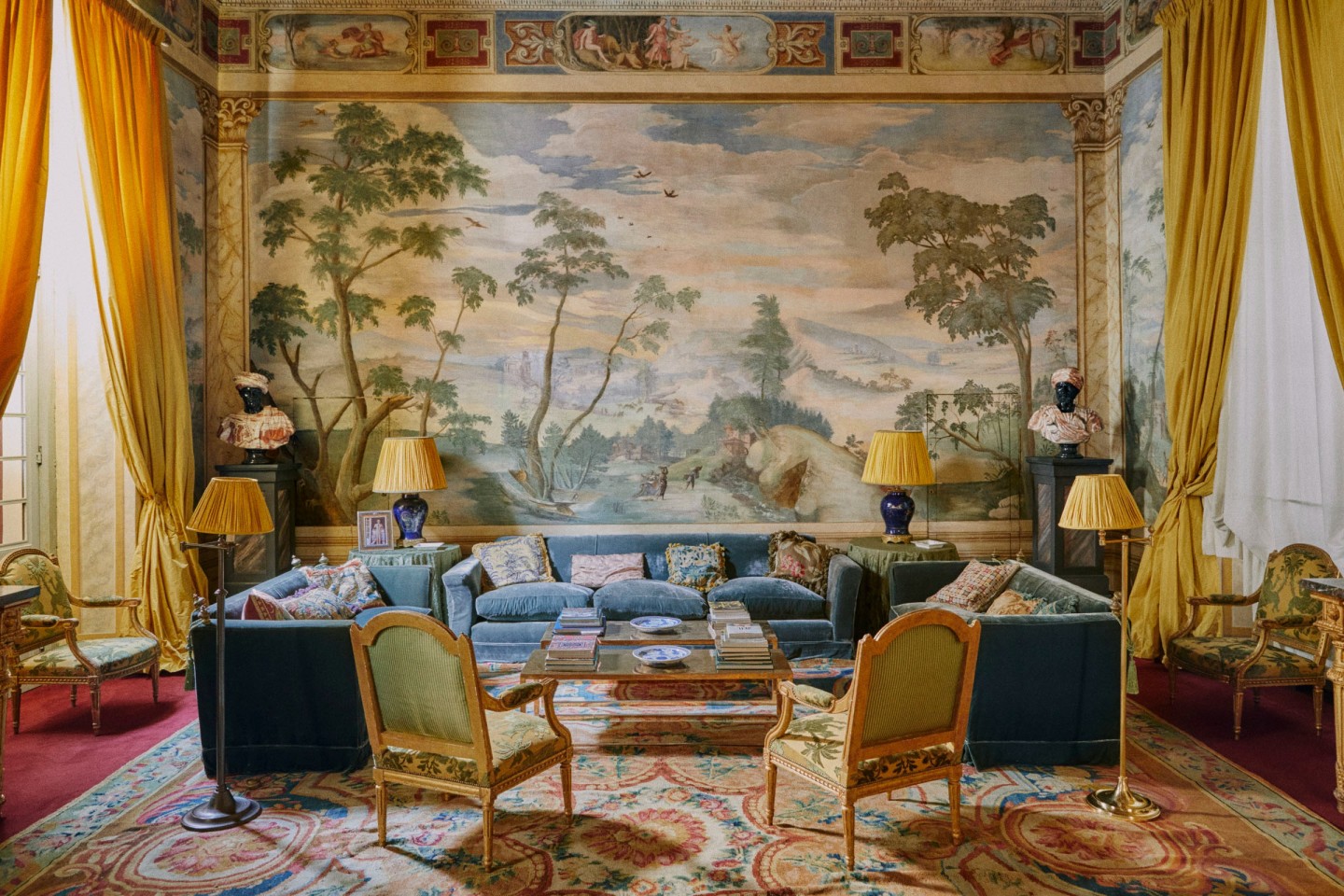
Roula Khalaf, Editor of the FT, selects her favourite stories in this weekly newsletter.
The first thing in Genoa by which I was completely dazzled – but far from the last – was hidden away inside the 17th-century monastery complex of Sant’Ignazio. In an echoey refectory hall, a dozen or so pages of parchment and vellum were arrayed across wooden tables. There were treatises in Latin and Majorcan Arabic, and an enormous Ottoman-era decree, crowned with the gleaming gold calligraphic tughra of the sultan; another bore the signature of a 12th-century pope. Impressive enough on their own, but before I left I was shown other rooms, in which thousands more such documents were carefully shelved and cord-bound; lined head to toe, I was told, they would stretch about 40km.
It’s among the most significant state archives in Europe; “and most people have no idea it exists”, says Marco Bucci, the city’s mayor. Genoa – population just under 815,000, Italy’s largest (or second-largest, depending on your metrics) commercial port and the capital of the region of Liguria – has a history replete with military dominion, economic primacy and staggering wealth. It harbours a patrimony of which the archive is only a small piece; there are churches to rival Naples’s alongside aristocratic palaces that compare, in magnificence and number, to those of Rome.

But while it still enjoys outsized maritime-commercial clout and has orchestrated a few moments in the modern spotlight (Expo 1992, European Capital of Culture 2004), Genoa seems not to register meaningfully on the radar of globetrotters. It’s still something of a secret place. “Thirty years ago, no one [in civic government] had a vision for this city to be a destination,” Bucci continues. “They wanted it to be an industrial city. But Genoa is an incredible lens on Italian culture, a unique window.”
Wedged into a narrow coastal plain between the Mediterranean and the Ligurian Apennines, Genoa, like all good ports, is a dense layer cake of cultures, languages and influences. Splendour reigns on the ruler-straight Via Garibaldi, home to many of the Palazzi dei Rolli – the 16th/17th-century palaces built by the republic’s noble class, showplaces in which to receive, impress and do the big deals with dignitaries from across the then-known world.
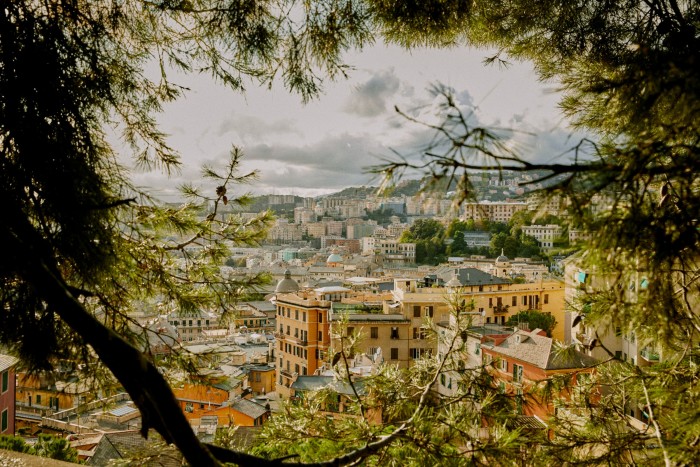


But descend into the lanes that stitch the labyrinthine centro storico together, and the symmetry dissolves. Known colloquially as carrugi, these dim canyons, their upper reaches barely touched by lemony Riviera light, seem to go everywhere and nowhere; a few are so narrow you can just about brush the walls either side of you with your fingers as you walk. Scents of fresh focaccia, coffee and incense float on the air as you meander, anchored by the base note of the sea.
Stop and look up and you might find yourself staring at a grand façade, camouflaged by the lane’s smallness, its decorative frescoes fading away in the ghosted tones of old prosperity. Or catching a glimpse into a first-floor ballroom, its lavishly stuccoed ceiling gleaming in the light. Or facing an unassuming church door, beyond which might be works by Rubens, van Dyck or Orazio Gentileschi: the superstars of their era who were lured to Genoa by the patronage of its founding families – the Grimaldi, Doria, Cattaneo, Pallavicino, Durazzo, Spinola and others who administered the republic, and the Holy Roman Empire’s funds, throughout Genoa’s golden age.
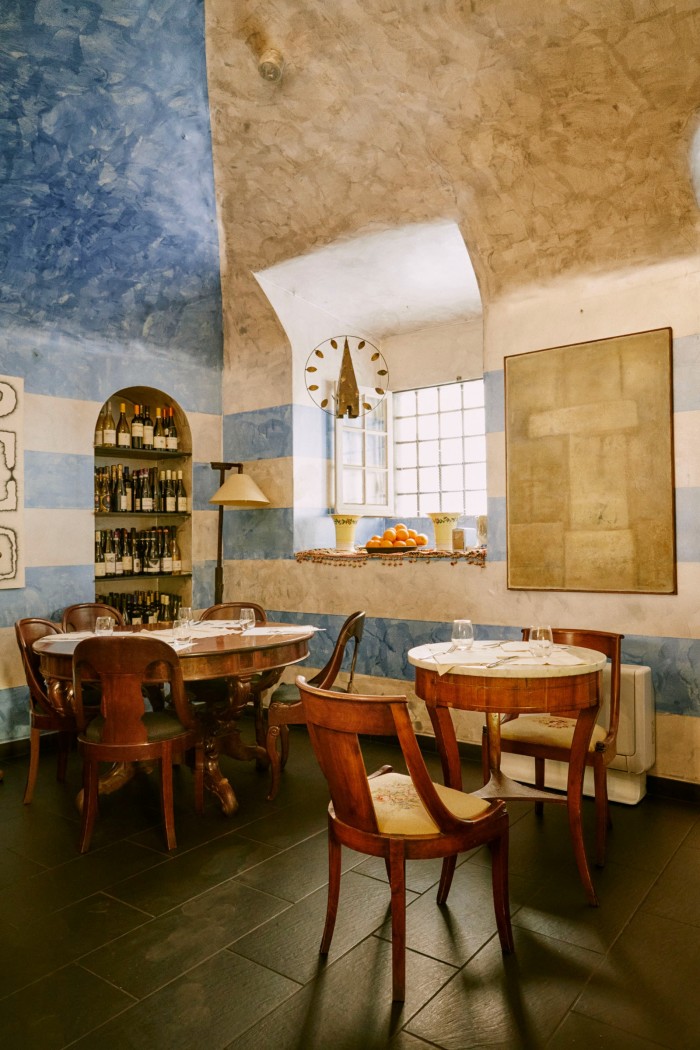

But “it’s a city that hides behind façades”, says Lorenzo Bagnara, owner of the design emporium Via Garibaldi 12. “This store mirrors Genoa a bit that way. You’ll probably only find it if you’re very curious or you know where to look.” Located up a flight of stairs at the back of the foyer of one of the Palazzi dei Rolli, it spreads across hundreds of square metres of the piano nobile. Its ceilings are frescoed ornately, its walls and door frames are gilded or painted delicate pistachio, its monochrome marble floors gleam – all a backdrop for an authoritative edit of furniture, tableware, books, fine art, exquisite kitchen toys and more. Bagnara tells me that in this same palazzo, one storey up, was once a ballroom whose ceiling was covered entirely in lapis lazuli (sadly destroyed by bombing in the second world war): “Maybe it’s arrogant to say it, but the first time I saw Versailles… I wasn’t so amazed.”
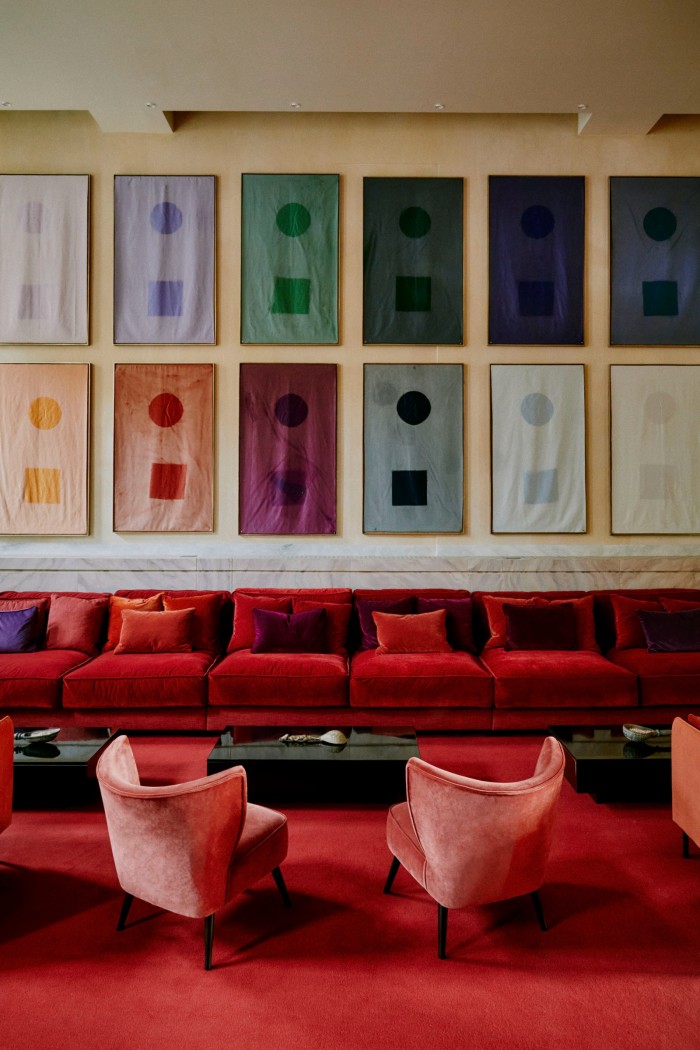
At the same time, he says, “Genoese are constantly discovering our own city.” There are carrugi he himself only recently happened upon for the first time, the surprise and gritty contrast always exhilarating. Unlike Florence, where the patrimony is almost hyper-managed, or Rome, where the wow moments come stupefyingly thick and fast, Genoa requires that you dig a bit for your dazzle.



That said, the city appears to be in the midst of an unofficial rebrand. Bucci, who was previously CEO of the Eastman Kodak Company, has brought a businessman’s drive to his ambitious legacy plans: thanks to his unwavering support for a high-speed train connection between Milan and Genoa, the Ferrovie dello Stato (the state railway company) will launch one of as little as 50 minutes in 2026, which will likely have positive implications not just for tourism but for the city’s demographics too.

Private citizens are also investing in projects to raise the global profile. Carlo Clavarino – Genoese nobleman, international chairman of insurance behemoth Aon and ad hoc PR – is one of the most visible among them. Probably the most networked as well: scattered around the Palazzo Angelo Giovanni Spinola, the property he owns on Via Garibaldi, are photographs of him with, among others, Jack Ma, Blackstone co-founder and CEO Stephen A Schwarzman and Queen Elizabeth II. He left for Milan in 1982 and didn’t really return until 2017. “I was having lunch in the restaurant in the Palazzo di Branci Doria with a friend, who told me that it [the palace] was for sale,” he tells me. “But when I spoke to my brother, he said, ‘If you’re serious about a palazzo here, go look at [this one]. It’s the only one worth having.’”
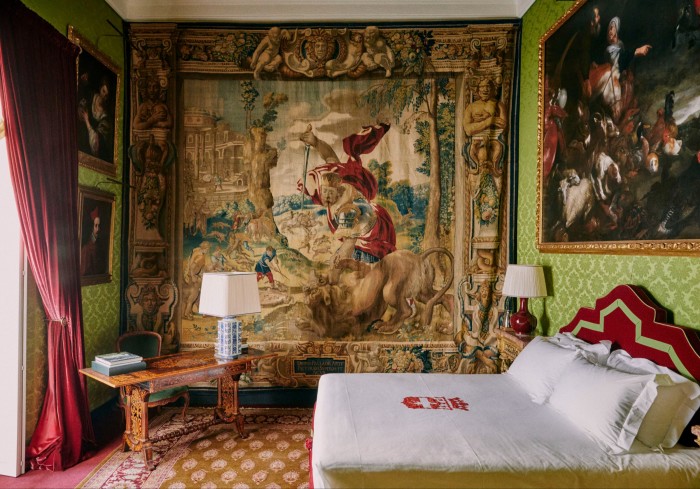


Six years and a ruthlessly meticulous restoration later, Palazzo Spinola gleams from its immaculate entrance-hall ceilings (the original frescoes were painted by Italian artists who were then poached by the Escorial in Spain) to the bronze coffee tables, designed by Osanna Visconti, in the sala blu, as the front sitting room is known. Clavarino asked Nicolò Castellini Baldissera to help with the interior design of the bedrooms and some furnishings; important antiques abound, among them 18th-century side chairs, re-covered in a leopard print, that once belonged to Gianni and Marella Agnelli. Decorative painting and trompe l’oeil – old traditions in Liguria – are everywhere: stylised filaments of colour mimic panelling, and mouldings and landscapes bloom across the sitting rooms. In one of the 14 bedrooms, the worn red velvet of an antique tapestry is replicated with paint across the walls and ceiling. But the most impressive sleight of hand is a hidden door in Clavarino’s cosy library: carved boiserie that mimics a book-filled shelf, leading into the only bedroom on the first floor.
Then there is the art. A life-size portrait of a nobleman by Tintoretto hangs in the main dining room; across from it is another, by Rubens (“That was in the family, actually”). The walls of the sala blu feature van Dyck and Antonio Maria Vassallo; by the entrance to the library is a Portrait of a Lady by Rogier van der Weyden. Clavarino points to a massive tapestry, also by Rubens, which is about to be taken down and shipped to a museum in Mantua, on loan.



The effect is overall magnificence. Which is, strategically, the point: the Rolli – that 16th-century roll call of noble houses that represented the city’s interests – “was about business”, says Clavarino. “And that’s what I’m doing here.” He’s already hosted one major reception for 100 international guests; at the occasional request of the mayor, he’ll entertain famous names and regularly invites his own friends and clients. He recently held the Aon board meeting here, arranging private tours and viewings around the city.
“I’d started canvassing people” at dinner parties, he recalls over breakfast, seated under a Mario de’ Fiori still life of flowers. “‘Have you been to Florence?’ ‘Of course!’ ‘And Venice?’ ‘Ma si, 20 times.’ ‘And Genoa?’ Silence. Nothing.” His indignant bemusement mirrors Bucci’s. “Genoa was an enormous power; it was a determining force in the world’s history. And no one knows about it.”
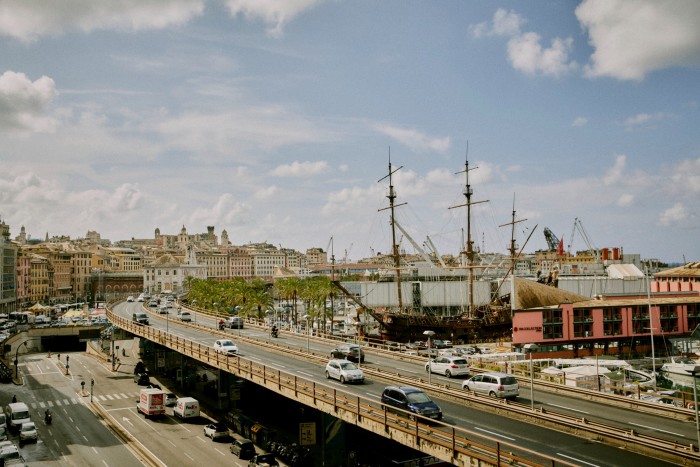
Enter the Friends of Genoa Foundation, which he established last year. Its mandate: revive the city’s role on the world stage, via restoration projects, cultural events, think tanks on education and business, and more. It’s comprised of prominent Genoese and a board whose star power includes Blackstone’s Schwarzman, Kwan Yoon, general partner of BlueRun Ventures and Rolly Van Rappard, the Dutch co-founder and co-chair of private equity firm CVC Capital Partners. The foundation has already bankrolled a renovation of the lighting design of the Palazzo Rosso, a house museum some doors down from Palazzo Spinola – “an incredible collection, that no one ever goes to see” – as well as the sacristy in the church of San Siro.

Emanuela Brignone Cattaneo is also a Friend, in both senses, of Genoa. Born in Paris, half-Italian and Genoese by marriage, she has a rigorous, seemingly bottomless familiarity with her adoptive city. She knows its hidden chapels and obscure reliquaries, its best fried anchovies and finest spice dealers, its widest, clearest panoramic views. As of summer 2023, she’s also a hotelier. Palazzo Durazzo, one of several historic properties belonging to the family of her husband, Giacomo Cattaneo Adorno, is on Via del Campo – like Via Garibaldi, dotted with aristocratic palaces. It directly overlooks Genoa’s port and famous sopraelevata, the raised road that traverses the city.
Twelve suites, each totally unique in style, now occupy three of Palazzo Durazzo’s floors, along with a double-height lounge and a breakfast room with views over the Biosphere designed by Renzo Piano, Genoa’s favourite son. An architect herself (she worked on the renovation of the Musée d’Orsay with Gae Aulenti), Brignone Cattaneo oversaw the restoration; Cesare Barro, an artist and designer based between the US and Europe, created its whimsical interiors with her. Decorative painting plays a role, as do museum-quality Chinese papiers peints, artfully displayed antique costumes, African sculpture, thousands of (sustainably sourced) shells and corals, and some well-judged hits of contemporary art (the Cattaneo Adornos are prominent collectors). There are also original 17th-century frescoes by Domenico Parodi, a master of his era: one ceiling depicts the palazzo’s namesake, Doge Stefano Durazzo, as Neptune; another allegorically represents the four rivers that bounded the Ligurian territory.


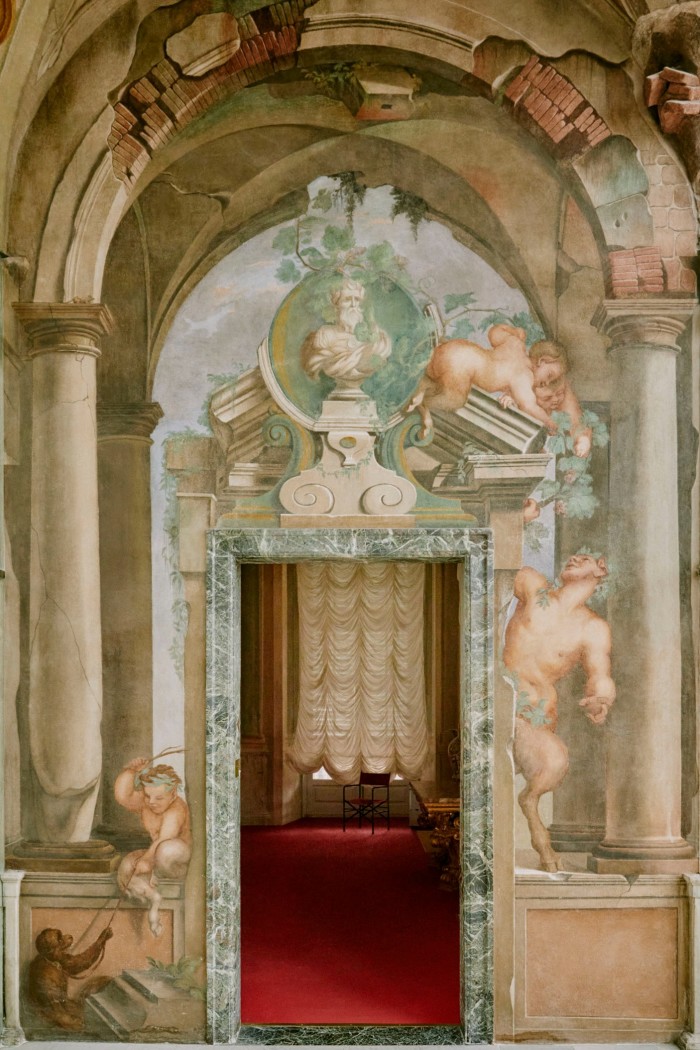
Built in 1624, Palazzo Durazzo quickly became part of the Rolli system. “So in a way, it was already a sort of hotel,” Brignone Cattaneo says. “When we restored it –and it required seven years of serious intervention – we wanted to reprise this theme, to be able to host people in a very special and uniquely Genoese way.”
The hotel is one of the more original, and beautiful, I’ve seen open in Italy in some time – an impression amplified by the vivid contrast its serene interiors make with the life playing out in the carrugi below. “Yes!” Brignone Cattaneo says happily. “This building is part of the city that is really the port: the sea is right there on the other side; there’s the day-to-day flow. This assertion we’ve made here, which is quite courageous if you think about it” – looking around, calculating the spend, I silently concur – “is for people who love travel in all its facets, including those moments of great contrast.” Much like Genoa itself is, history, grit, dazzle and all.
Maria Shollenbarger was a guest of Palazzo Durazzo
How to spend it in Genoa
STAY
Palazzo Durazzo From €495, palazzodurazzo.com
SEE AND DO
Bagni Sillo The open-secret coolest beach club around: Blue Flag water, cliffside setting, great cocktails (30 minutes’ drive from the centre). @bagni_sillo
Basilica di San Siro Via San Siro 4
Musei di Strada Nuova – Palazzo Rosso museidigenova.it/it/palazzo-rosso
Palazzo Ducale For the Letizia Battaglia show until 1 November, and Artemisia Gentileschi from 16 November–1 April 2024. Pinksummer Contemporary art space in the Palazzo Ducale. pinksummer.com
Rolli Days A Genoa-wide open house of some 40 of the 42 Palazzi dei Rolli, including the spectacular gardens of Palazzo Lomellino; the next one is 13-15 October. rolliestradenuove.it/en/
EAT AND DRINK
Caffè degli Specchi Old-world atmosphere in spades near the cathedral. caffedeglispecchi.it
Cambi Café A pretty dining room and the most charming host in Genoa, Marcello Cambi. @cambicafe
Cremeria Buonafede For caffè con panera (espresso semifreddo), the ultra-Genoese caffeine-sugar bomb. cremeriabuonafede.it
Ortica Just east of the city, for elevated cuisine and romantic Riviera views. tenutagolfoparadiso.com/ristorante-ortica
Sà Pesta For fried anchovies, farinata, unpretentious service. Via dei Giustiniani 16/R (+3910-246 8336)
SHOPS
Finollo Where Gianni Agnelli had his shirts made. finollo.it
Romanengo Since 1780. For sugared violets that are works of art. romanengo.com
Via Garibaldi 12 viagaribaldi12.com
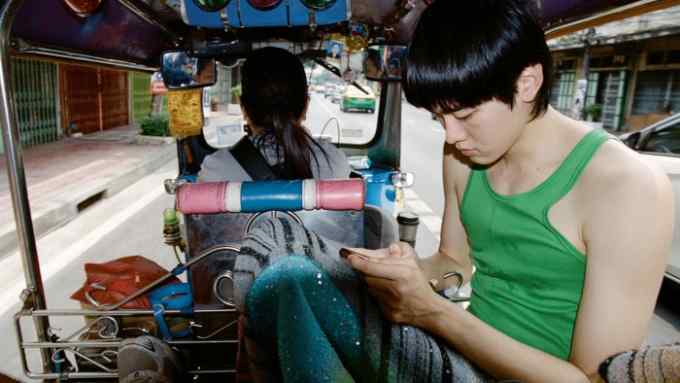
Comments